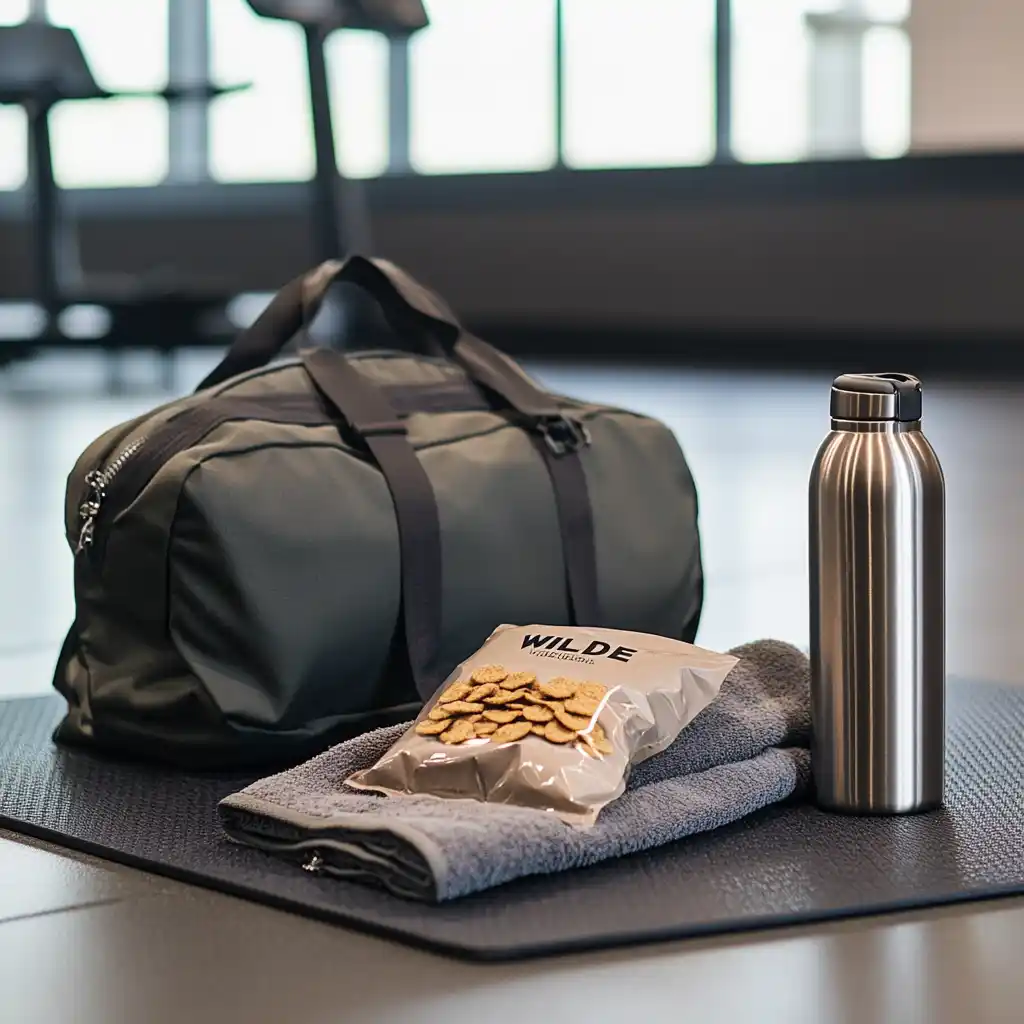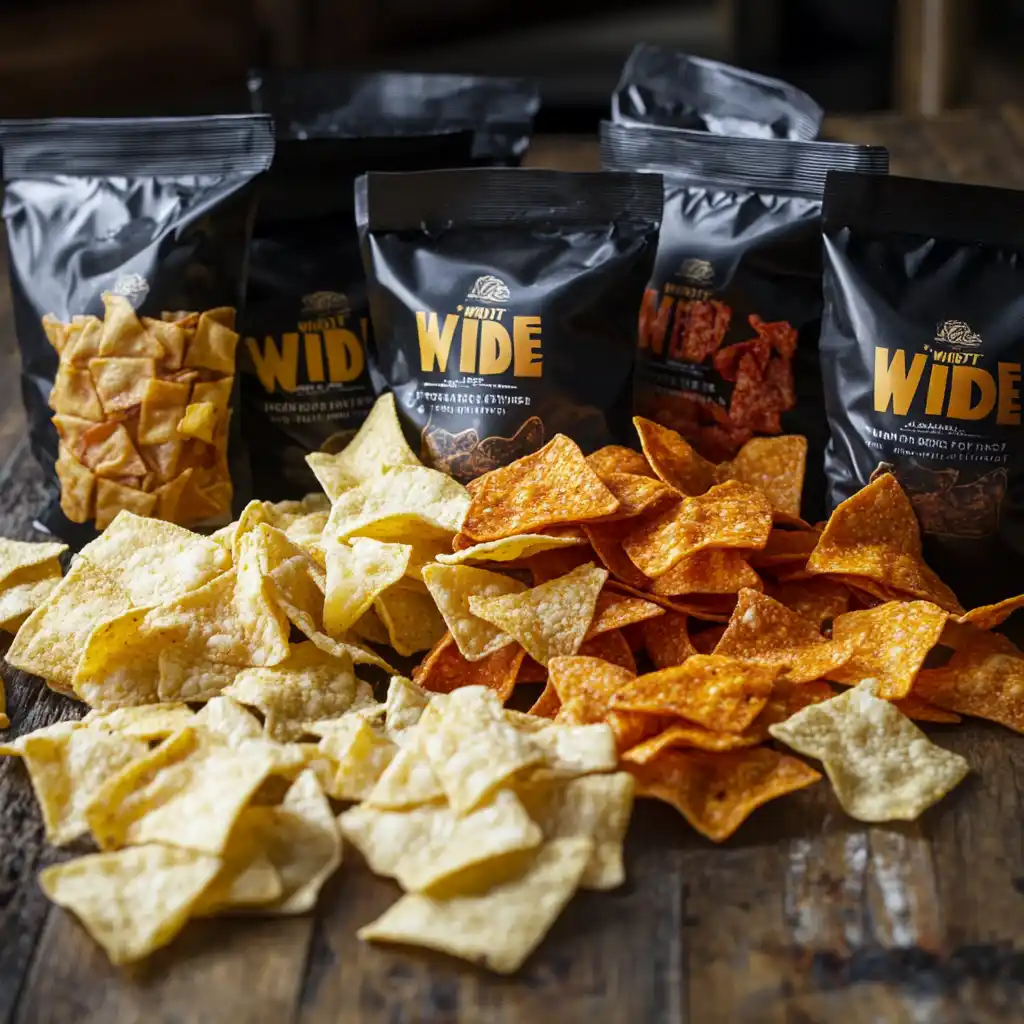Are Wilde Protein Chips a Healthy Snack Choice? The demand for protein-packed snacks has surged in recent years, as people seek alternatives to traditional chips that align with healthier lifestyles. Among these, Wilde Protein Chips have carved out a unique niche. Made from chicken breast and marketed as a better-for-you snack, these chips claim to deliver the crunch and flavor of classic chips while offering the nutritional benefits of a high-protein diet.https://royalesrecipes.com/how-to-choose-protein-chips/
Unlike conventional potato or tortilla chips, Wilde Protein Chips are crafted using animal protein as their base ingredient, making them stand out in the snack aisle. But are they truly a healthy choice, or do they come with trade-offs? This article explores the ingredients, nutritional value, and considerations for incorporating Wilde Protein Chips into a balanced diet.
What Are Wilde Protein Chips?
Wilde Protein Chips are an innovative take on snacking, designed for those seeking a high-protein, low-carb alternative to traditional chips. Unlike plant-based chips made from vegetables or grains, Wilde Protein Chips use chicken breast as their primary ingredient, combined with seasonings and other natural flavors.https://ftw.usatoday.com/lists/snack-review-wilde-protein-chips-work-best-made-of-chicken
How Are Wilde Protein Chips Made?
The production process of Wilde Protein Chips is what sets them apart:
- Chicken Breast Base: The primary ingredient is 100% natural chicken breast, ground and combined with tapioca starch and natural seasonings.
- Cooking Method: The mixture is cooked using a special baking and frying technique to achieve a crispy, chip-like texture.
- Flavor Coating: Wilde Protein Chips are coated with various seasonings to create bold flavors, such as:
- Buffalo Style
- Chicken & Waffles
- Nashville Hot
- Sea Salt & Vinegar
Key Ingredients
The ingredients in Wilde Protein Chips are simple and designed to keep the product gluten-free and high in protein. A typical ingredient list includes:
- Chicken Breast: The main protein source.
- Tapioca Starch: Used to create structure and texture.
- Sunflower Oil: For frying and crispiness.
- Seasonings and Spices: Natural flavorings like paprika, onion powder, and garlic powder.
- Coconut Flour: Occasionally included in some varieties for additional texture.
Unique Selling Points
Wilde Protein Chips set themselves apart from traditional chips and even other protein snacks through:
- High Protein Content: Derived from real chicken breast, each serving delivers approximately 10-15 grams of protein.
- Low Carbohydrates: With fewer carbs than potato chips, they cater to low-carb and keto diets.
- Gluten-Free Certification: Making them suitable for those with gluten sensitivities or celiac disease.
- Bold Flavors: Offering unique taste profiles that appeal to adventurous snackers.
With their innovative recipe and emphasis on protein, Wilde Protein Chips appeal to a wide range of consumers. However, to assess their healthiness fully, it’s essential to examine their nutritional profile.
Nutritional Profile of Wilde Protein Chips
To determine if Wilde Protein Chips are a healthy snack option, it’s crucial to analyze their nutritional profile. These chips are designed to deliver a balance of protein, fats, and carbohydrates, but their suitability depends on individual dietary needs.

Typical Nutritional Breakdown
Here’s the approximate nutritional information for a standard 28-gram serving of Wilde Protein Chips (varies slightly by flavor):
- Calories: 170-180 kcal
- Protein: 10-15 grams
- Total Fat: 8-10 grams
- Saturated Fat: 2-3 grams
- Carbohydrates: 9-11 grams
- Fiber: 1-2 grams
- Sugar: Less than 1 gram
- Sodium: 200-300 milligrams
This profile highlights several key aspects that differentiate Wilde Protein Chips from traditional chips and other protein snacks.
High Protein Content
One of the standout features of Wilde Protein Chips is their high protein content, with 10-15 grams per serving. Protein is essential for:
- Muscle Repair and Growth: Especially beneficial for active individuals and athletes.
- Satiety: Helps keep hunger at bay, reducing the likelihood of overeating.
Compared to regular potato chips, which typically have less than 2 grams of protein per serving, Wilde Protein Chips offer a significant nutritional advantage.
Lower Carbohydrates
Wilde Protein Chips contain around 9-11 grams of carbohydrates per serving, which is lower than traditional chips (approximately 15-20 grams per serving). This makes them a suitable choice for those following low-carb or keto diets.
Fat Content
With 8-10 grams of fat per serving, Wilde Protein Chips are comparable to regular chips. However, the source of fat—primarily from sunflower oil—may not provide the same health benefits as natural fats from nuts or avocados.
Sodium Levels
The sodium content ranges from 200-300 milligrams per serving, depending on the flavor. While this is relatively moderate compared to other processed snacks, it may still be a concern for those monitoring their sodium intake.
- Daily Limit: The recommended daily sodium intake for adults is 2,300 milligrams, and less for children. Consuming multiple servings of Wilde Protein Chips could contribute significantly to daily sodium consumption.
Minimal Sugar and Fiber
Wilde Protein Chips contain less than 1 gram of sugar, making them a low-sugar snack option. However, their fiber content (1-2 grams) is relatively low, which may limit their ability to support digestive health.
Key Nutritional Comparisons
| Nutrient | Wilde Protein Chips | Traditional Chips | Vegetable-Based Chips |
|---|---|---|---|
| Protein | 10-15g | <2g | 2-4g |
| Carbohydrates | 9-11g | 15-20g | 10-18g |
| Sodium | 200-300mg | 150-250mg | 180-300mg |
| Total Fat | 8-10g | 10-12g | 7-9g |
This comparison shows that Wilde Protein Chips excel in protein content but are comparable to other chips in terms of sodium and fat.
Benefits of Wilde Protein Chips
Wilde Protein Chips stand out as a healthier snack option compared to traditional potato chips. Their unique composition offers several benefits, making them an appealing choice for fitness enthusiasts, dieters, and those seeking better-for-you snacks.
High Protein Content for Satiety and Muscle Support
Wilde Protein Chips are made from real chicken breast, providing 10-15 grams of protein per serving. This high protein content has several advantages:
- Promotes Satiety: Protein takes longer to digest than carbohydrates or fats, helping you feel fuller for longer and potentially reducing snacking frequency.
- Supports Muscle Growth: Protein is essential for muscle repair and growth, making Wilde Protein Chips an excellent post-workout snack for active individuals.
For comparison, traditional potato chips provide less than 2 grams of protein per serving, offering little in terms of satiety or nutritional benefit.
Low Carbohydrate Content for Weight Management
Wilde Protein Chips are designed to fit low-carb and keto-friendly diets, with only 9-11 grams of carbohydrates per serving. This is particularly beneficial for those trying to:
- Manage Weight: Fewer carbs can help regulate blood sugar levels and reduce unnecessary calorie intake.
- Support Keto Diets: The low carb count allows these chips to fit easily into a ketogenic diet plan.
Gluten-Free and Allergen-Friendly
Wilde Protein Chips are certified gluten-free, making them safe for individuals with:
- Celiac Disease: No risk of gluten contamination.
- Gluten Intolerance: A satisfying snack alternative for those avoiding gluten in their diet.
Additionally, the ingredients are free of common allergens like nuts and soy, although some flavors may contain traces of dairy.
Nutritional Superiority Over Traditional Chips
Wilde Protein Chips outshine regular chips by offering significantly more protein and fewer carbohydrates while maintaining the crunchy texture and bold flavors that snackers enjoy. This balance makes them an excellent alternative to highly processed chips that lack nutritional value.
Variety of Unique Flavors
The bold and creative flavors of Wilde Protein Chips set them apart from other protein-based snacks. Popular options like Buffalo Style, Chicken & Waffles, and Sea Salt & Vinegar cater to diverse taste preferences, ensuring there’s a flavor for everyone. These innovative choices help maintain interest and make healthier snacking more enjoyable.
Convenience and Portability
Wilde Protein Chips come in single-serving bags, making them:
- Easy to Carry: Perfect for on-the-go lifestyles.
- Quick and Mess-Free: A convenient snack for work, school, or post-gym fuel.
This portability adds to their appeal for busy individuals looking to maintain healthy habits while managing a packed schedule.
Great for Active Lifestyles
Thanks to their protein-packed profile, Wilde Protein Chips are especially suited for people with active lifestyles, including:
- Athletes: Ideal for muscle recovery after workouts.
- Hikers and Campers: Lightweight and shelf-stable, they’re a great source of protein on the trail.
Cleaner Ingredients Compared to Other Snacks
Wilde Protein Chips emphasize natural, simple ingredients, avoiding overly processed additives commonly found in traditional chips. For health-conscious snackers, this focus on quality is a significant advantage.
While Wilde Protein Chips offer many benefits, it’s essential to consider potential downsides to decide if they’re the right choice for everyone.
Potential Downsides of Wilde Protein Chips
While Wilde Protein Chips are a healthier alternative to traditional snacks, they aren’t without potential drawbacks. Understanding these limitations can help consumers make informed decisions about whether these chips fit their dietary needs and lifestyle.
High Sodium Content
One of the most notable concerns with Wilde Protein Chips is their sodium content, which ranges from 200-300 milligrams per serving, depending on the flavor.
- Health Implications: Excessive sodium intake can contribute to high blood pressure and increase the risk of cardiovascular diseases over time.
- Daily Sodium Limit: The recommended sodium intake for adults is 2,300 milligrams per day, and for children, it’s even lower. Eating multiple servings of Wilde Protein Chips in one sitting can quickly push sodium consumption close to these limits.
Moderate Fat Levels
With 8-10 grams of fat per serving, Wilde Protein Chips are comparable to traditional chips in terms of fat content. While the fat is mostly from sunflower oil, which is considered a healthier option, it’s still a processed fat. Consuming too many servings could contribute to excessive fat intake, especially for those monitoring their calorie consumption.
Potential Allergen Risks
While Wilde Protein Chips are free from gluten and many common allergens, they may contain traces of dairy or coconut flour, depending on the flavor. These ingredients can pose issues for:
- Lactose-Intolerant Individuals: Certain flavors may cause digestive discomfort.
- Allergies to Coconut: Though uncommon, coconut allergies can lead to adverse reactions.
Parents or individuals with specific dietary restrictions should carefully check the ingredient list of each flavor.
Limited Fiber Content
Wilde Protein Chips provide only 1-2 grams of fiber per serving, which is relatively low compared to snacks like whole-grain crackers or vegetable-based chips. Fiber is crucial for:
- Digestive Health: Aiding in regular bowel movements.
- Satiety: Helping individuals feel fuller longer, reducing the likelihood of overeating.
For those looking to increase their fiber intake, these chips might not be the best choice.
Cost Considerations
Wilde Protein Chips are generally more expensive than traditional chips, often priced at $3-4 per bag. This higher cost can make them less accessible to some consumers, especially when compared to bulk or store-brand chip options.
- Affordability: For families or frequent snackers, the cost per serving may add up quickly.
- Perceived Value: While the nutritional benefits justify the higher price for some, others may find it challenging to justify the expense.
Not Suitable for Everyone’s Dietary Needs
While Wilde Protein Chips cater to specific diets like keto or low-carb, they may not align with the nutritional priorities of all consumers. For example:
- Athletes Needing Carbs: Active individuals requiring quick energy might find the low-carb content insufficient for pre-workout fuel.
- Toddlers or Younger Kids: The sodium and protein levels may not be appropriate for small children with different nutritional needs.
Risk of Overconsumption
The flavorful, crunchy nature of Wilde Protein Chips makes them easy to overeat. Consuming multiple servings at once can lead to:
- Excess Sodium and Fat Intake: Increasing the risk of health issues over time.
- Imbalanced Diet: Over-reliance on these chips may displace healthier snacks like fruits, vegetables, or whole grains.
While Wilde Protein Chips have their drawbacks, many of these can be mitigated through mindful consumption and portion control.
Who Are Wilde Protein Chips Best For?
Wilde Protein Chips are designed to meet the needs of health-conscious snackers seeking a high-protein, low-carb alternative to traditional chips. While they are not universally ideal, they can be an excellent choice for specific groups based on their dietary goals and lifestyles.
Fitness Enthusiasts and Athletes

For active individuals, Wilde Protein Chips offer a convenient source of protein to support muscle recovery and maintenance.
- Post-Workout Recovery: The 10-15 grams of protein per serving can help repair and build muscles after a workout.
- On-the-Go Nutrition: Their portability makes them a practical snack to carry to the gym or sports events.
However, they may lack the carbohydrates necessary for pre-workout energy. Pairing them with a fruit or another carb-rich snack can provide a more balanced energy boost.
Low-Carb and Keto Dieters
Wilde Protein Chips are particularly well-suited for those following low-carb or ketogenic diets:
- Low Carbohydrate Content: With just 9-11 grams of carbs per serving, they align well with daily carb limits for keto dieters.
- High Fat Compatibility: The moderate fat levels support the high-fat component of ketogenic eating plans.
These chips allow individuals to enjoy a crunchy, savory snack without jeopardizing their carb goals.
Gluten-Free and Allergen-Sensitive Consumers
Wilde Protein Chips are a safe snack for those with specific dietary restrictions:
- Gluten-Free Certification: Ideal for people with celiac disease or gluten sensitivity.
- Nut-Free Ingredients: Suitable for environments where nut allergies are a concern.
However, those with dairy or coconut allergies should double-check flavor-specific ingredient lists to ensure safety.
Weight-Conscious Snackers
For individuals looking to manage or lose weight, Wilde Protein Chips can help curb hunger without excessive calories or unhealthy ingredients:
- Satiety from Protein: The high protein content can help reduce overall calorie intake by keeping you feeling full longer.
- Lower Calorie Count: At 170-180 calories per serving, these chips are relatively low in calories compared to many traditional snacks.
Busy Professionals and Parents
Wilde Protein Chips are ideal for people seeking convenient snacks that don’t compromise on nutrition. Their single-serving packaging makes them a hassle-free option for:
- Work Breaks: A healthier snack alternative for the office.
- Kid’s Lunches: While not suitable for young toddlers, older kids with higher protein needs may enjoy them as a school snack.
Adventurers and Travelers
For outdoor enthusiasts, Wilde Protein Chips provide a lightweight, non-perishable snack option:
- Portable and Durable: Perfect for hiking, camping, or road trips.
- Protein-Packed Energy: Helps sustain energy levels during long outdoor activities.
Who Should Avoid Wilde Protein Chips?
While Wilde Protein Chips suit many people, they may not be the best choice for everyone:
- Toddlers and Younger Kids: The sodium and protein levels might not align with their dietary requirements.
- Individuals Seeking High-Fiber Snacks: The low fiber content may not support digestive health goals.
- Those on a Budget: The relatively high cost might not fit into every household’s budget.
Wilde Protein Chips cater to a diverse range of lifestyles and dietary preferences, making them a versatile option for many.
FAQs About Wilde Protein Chips
Here are answers to common questions about Wilde Protein Chips, helping consumers understand their suitability and benefits more clearly.
Are Wilde Protein Chips healthy?
Yes, Wilde Protein Chips can be a healthy snack option, especially for those seeking high-protein, low-carb alternatives. They provide significantly more protein than traditional chips, contain minimal sugar, and are gluten-free. However, their sodium content and relatively low fiber levels mean they should be consumed in moderation and as part of a balanced diet.
How are Wilde Protein Chips different from regular chips?
Wilde Protein Chips differ from regular potato or tortilla chips in several ways:
- Base Ingredient: Made from real chicken breast, not potatoes or grains.
- Higher Protein Content: Provide 10-15 grams of protein per serving compared to less than 2 grams in traditional chips.
- Lower Carbohydrates: Have about half the carbohydrates of traditional chips.
These differences make Wilde Protein Chips a more nutrient-dense option, especially for people focused on protein intake.
Are Wilde Protein Chips keto-friendly?
Yes, Wilde Protein Chips are keto-friendly. With only 9-11 grams of carbohydrates per serving and a balance of protein and fat, they fit well within the macronutrient requirements of a ketogenic diet.
Can kids eat Wilde Protein Chips?
Wilde Protein Chips can be suitable for older kids or teens, particularly those with high protein needs or active lifestyles. However, the high sodium and protein levels may not align with the nutritional needs of younger children, especially toddlers. Parents should ensure portion control and balance the chips with other nutrient-rich foods.
Do Wilde Protein Chips contain allergens?
Wilde Protein Chips are gluten-free and nut-free, but some flavors may contain dairy or coconut flour. Always check the ingredient list to ensure safety, particularly for those with allergies to these ingredients.
How often can you eat Wilde Protein Chips?
Wilde Protein Chips can be enjoyed as part of a balanced diet, but moderation is key. Their high sodium content and relatively low fiber levels make them better suited as an occasional snack rather than a daily staple. Pairing them with fresh fruits, vegetables, or other whole foods can help create a more balanced snack.
Where can I buy Wilde Protein Chips?
Wilde Protein Chips are widely available online and in select grocery stores. Popular retailers include:
- Amazon
- Walmart
- Target
- Whole Foods Market
You can also purchase them directly from the Wilde Protein Chips official website.
Are Wilde Protein Chips suitable for weight loss?
Yes, Wilde Protein Chips can support weight loss goals when consumed in moderation. Their high protein content promotes satiety, helping to reduce overall calorie intake. However, they should be paired with other nutrient-dense foods to ensure a balanced diet.
Conclusion
Wilde Protein Chips have redefined snacking for those seeking healthier alternatives to traditional chips. Made from real chicken breast and boasting a high-protein, low-carb profile, they cater to a wide range of dietary preferences, including fitness enthusiasts, low-carb dieters, and gluten-free snackers. With bold flavors and innovative ingredients, they provide a satisfying crunch that makes healthy eating enjoyable.

However, like any snack, Wilde Protein Chips come with considerations. Their high sodium content, moderate fat levels, and relatively low fiber mean they should be consumed in moderation. They are not a perfect fit for everyone—toddlers, younger kids, and individuals seeking high-fiber snacks may need to look elsewhere. Additionally, their premium pricing can be a barrier for budget-conscious consumers.

